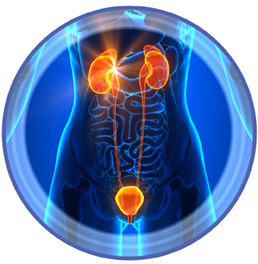Incontinence and Physical Therapy
By Brittany Deuso, PT, DPT
Even if patients are hesitant to talk about it, the statistics tell the story.
 Incontinence – leakages related to either the bladder or the bowel – afflicts more than 13 million people in the United States annually. For those over the age of 65, incontinence occurs in 51 percent of the population – more often in women, according to the Centers for Disease Control and Prevention.
Incontinence – leakages related to either the bladder or the bowel – afflicts more than 13 million people in the United States annually. For those over the age of 65, incontinence occurs in 51 percent of the population – more often in women, according to the Centers for Disease Control and Prevention.
Incontinence is not inevitable with age, however, and is a treatable and often curable condition – especially when physical therapy is used as a treatment tool.
Physical therapy services aim at increasing a patient’s quality of life through self-management and the use of specific strategies to reduce symptoms and improve function.
Incontinence Risk Factors
For the aging, incontinence is associated with a number of factors, including chronic conditions, such as diabetes and stroke, cognitive impairment and mobility impairment. Bladder incontinence can also be influenced by age-related changes in the lower urinary tract, urinary tract infection and other health-related conditions to include mobility impairment.
 Risk factors for bowel incontinence include chronic diarrhea, inadequate fiber and water intake and chronic constipation. Health factors include diabetes, stroke, neurologic and psychiatric conditions, cognitive impairment and mobility impairment.
Risk factors for bowel incontinence include chronic diarrhea, inadequate fiber and water intake and chronic constipation. Health factors include diabetes, stroke, neurologic and psychiatric conditions, cognitive impairment and mobility impairment.
In addition to the financial burden, people suffering from incontinence may carry an emotional burden of shame and embarrassment that adds to the physical discomfort and disruption of their lives.
Treating Incontinence
People with incontinence suffer most commonly from stress incontinence or urge incontinence.
Stress incontinence stems from the increased abdominal pressure and weak muscles, resulting in the accidental release of urine. This happens, for example, when people laugh, cough, sneeze or jog.
Urge incontinence occurs when people must get to the bathroom right away from an immediate urge that there is no stopping.
But because people feel discomfort in talking about incontinence issues, this can lead to feelings of shame, isolation and depression. As a result, many people fail to seek treatment, either by a family doctor or physical therapist who specializes in women’s health.
The Role of Physical Therapy
Physical therapy helps incontinence patients gain control of their symptoms, reducing the need for pads, special undergarments and medications.
In a private treatment room of the clinic, patients have their pelvic floor muscles evaluated. Treatment includes heat to relax the muscles, exercise to strengthen the muscles, biofeedback, and manual therapy if indicated.
On the first day of therapy, the therapist spends 20 to 25 minutes simply educating patients on what exactly the condition entails, how to “find” and strengthen the right muscles to improve their quality of life and get back in control of their urges.
 Brittany Deuso, PT, DPT is accepting new patients at the Tidewater Physical Therapy Great Bridge Clinic in Chesapeake, VA. She provides comprehensive physical therapy treatment services and specializes in treating patients suffering from incontinence and pelvic floor pain. Deuso holds a Direct Access Certification. Find a clinic near you for your patients and learn more at www.tpti.com.
Brittany Deuso, PT, DPT is accepting new patients at the Tidewater Physical Therapy Great Bridge Clinic in Chesapeake, VA. She provides comprehensive physical therapy treatment services and specializes in treating patients suffering from incontinence and pelvic floor pain. Deuso holds a Direct Access Certification. Find a clinic near you for your patients and learn more at www.tpti.com.

